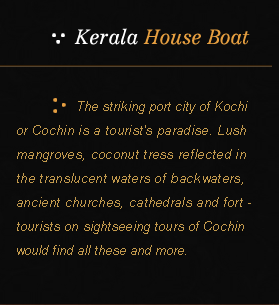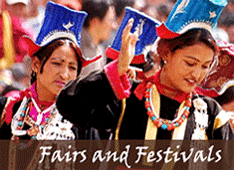
Location : Mumbai / Porbander / Dwarka / Rajkot / Bhavnagar / Diu / Gir / Gondal / Bhuj / Mandvi / Dasada / Ahmedabad
Mumbai Arrival
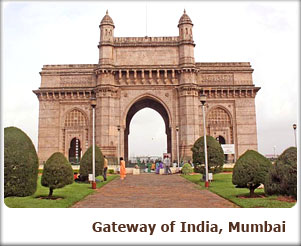
COMPANY REPRESENTATIVE will receive you on arrival at the AIRPORT and transfer to your hotel.
Mumbai is the 'City of Dreams', the city where people come with dreams in their eyes and leave being a dream in other people's eyes. The Financial Capital of India, it is home to the Dalal Street - the place where people either make or break their future. The city welcomes everyone with its arms wide open, rubbing them with its own charm and charisma. Of course, those who come here as well as those who live here need recreation places, where they can go and forget the tensions ailing daily life. The tourist attractions and excursions of Bombay provide them with numerous alternatives for having fun.
Mumbai, the 'Commercial Capital' of India, is the dream destination of many people, who come here to become a part of the Cine Industry. It is visited by a large number of people every year, of which a significant proportion comprises of tourists. The city has so much to offer in terms of attractions that you will find it difficult to explore it completely in a single visit. Right from historical monuments to lush green gardens and parks to beaches to shopping malls, Bombay has it all. It is known as the 'New York of India' and people come here on sightseeing tours to witness its glory.
Overnight will be at Mumbai.
Day 02
Mumbai
Proceed for a city tour of Mumbai after a relaxed breakfast.
Marine Drive:The six-lane road is kissed by the breath-taking Arabian sea. Palm trees along the road make the sight picture perfect. This road connects Nariman Point with Malabar Hills. As you take a stroll along the coast you will see locals and visitors enjoying their time. The other side of the coastline is graced by concrete buildings.
Chhatrapati Shivaji Terminus: This terminus is a World Heritage Site. If you have a keen interest on architecture, then you must visit this busiest railway station. Its pointed arches, stone dome as well as elegant interiors, like wood carving, tiles, ornamental iron, and brass railings will mesmerize you. Do not miss seeing this beautiful work of British and Indian architecture.
Mumbai Fort: The area north of Colaba is known as Mumbai Fort, since the old British fort was once located here. There are a lot of impressive buildings from Mumbai's golden period here. St. John's church, dedicated to the soldiers, who laid down their lives in the Sindh campaign of 1838, and the first Afghan war of 1843, is also worth a visit.
Gateway of India: If you think of Mumbai, then this structure will come to your head. This is the first site that is visited by most tourists. It was built as a triumphal arch to commemorate the visit of King George V and Queen Mary. This famous landmark will attract you like a magnet. There are steps in this monument which will lead you to the sea.
Flora Fountain:Built in 1864, this splendid structure deserves your visit. Flora fountain showcases the golden period of architecture. It is beautifully surrounded by imperial colonial buildings. It is a piece of Roman sculpture depicting the goddess Flora. The flow of water is like a never ending cycle of life.
Malabar Hill: It is the highest point in Southern Mumbai and is also the posh residential area. When you are standing on this hill, you will get the sensational view of the Mumbai city. On this hill, rests a Jain temple. The beautiful temple is totally built in marble. You can also see the historic Walkeshwar temple. Even the Banganga Tank is a site you should not miss because it is the oldest standing structure in Mumbai. Malabar hill boasts of Hanging Gardens, Kamala Nehru Park and Priyadarshini Park, three of the best parks in Mumbai.
Jehangir Art Gallery: Art has always interested people from everywhere. Your love for art, should take you to this art gallery. This huge gallery is directly linked with the renaissance of Indian art. Bombay Art Society has been managing the gallery. You can look around its four exhibition halls. This galary is an art lover's paradise.
Haji Ali's Mosque: This brilliantly white washed structure is built amidst the Arabian Sea. This mosque is connected to the mainland with a 500 yards narrow causeway. This is a prominent architecture floating in the middle of the sea. It is a single minaret rising to 85 feet; truly a great tourist spot.
Nariman point: This is the commercial hub of Mumbai, A major business district with corporate offices and industrial houses that replicate the busy Manhattan. Nariman Point is home to Maharashtra Legislative Assembly and Vidhan sabha.
Mani Bhavan: It was from Mani Bhavan that Gandhi, the father of the nation, initiated the Non-Cooperation, Satyagraha, Swadeshi, Khadi and Khilafat movements. Later, this building was taken over by Gandhi Smarak Nidhi to maintain it as a memorial of Gandhi. You must make it a point to visit this place and show your respect to great man of history.
Horniman Circle Garden: This beautiful green park is located in South Mumbai. It is right in the middle of soaring buildings. The park is proudly spread in an area of 10,101 sq m. This garden overlooks the prominent 'Asiatic Society of Bombay'.
The Prince of Wales Museum: This basalt stone structure came into existence in1905. The style and design of the museum replicates the medieval architectural style of western India. You will be spellbound with the art, archaeology and natural history of the museum. The finest collections, ranging from ancient Indus Valley relics to the artifacts from the Gupta and Maurya periods will overwhelm you.
Bombay Stock Exchange: It is the financial hub of Mumbai as well as India. This Stock exchange building is located in Dalal Street. This is a place where the economy of India gains or losses. It draws a great attraction because of the involvement of money transaction.
Dhobi Ghat: unique feature of Mumbai, the dhobi is a traditional laundryman, who will collect your dirty linen, wash it, and return it neatly pressed to your doorstep. The "laundries" are called "Ghats": row upon row of concrete wash pens, each fitted with its own flogging stone. The clothes are soaked in sudsy water, thrashed on the flogging stones, then tossed into huge vats of boiling starch and hung out to dry. Next they are ironed and piled into neat bundles. The most famous of these Dhobi Ghats is at Saat Rasta near Mahalaxmi Station where almost two hundred dhobis and their families work together in what has always been a hereditary occupation.
Kamala Nehru Park: This is a park in India covering an area of 4,000 sq yd (3,300 m²). Located at the top of Mumbai's Malabar Hill, it is named after Kamala Nehru, the wife of India's first Prime Minister Jawaharlal Nehru. A place frequently visited by schoolchildren, it has little to offer by way of entertainment apart from a structure shaped like a shoe. The shoe structure is inspired by the nursery rhyme "There was an old woman." From the garden, one can see the spectacular view of the city, Chowpatty Beach, and Queen's Necklace (Marine Drive).
In the evening enjoy the beach close to the hotel.
Chowpatty Beach: The beautiful stretch of the Chowpatty Beach is breath-taking. This deep blue sea complements the clear blue sky. Local people and tourists throng the beach during in the evening. The days are quieter around in the beach, whereas the evening is like a fun fair. Right from food stalls to monkey shows to self-styled gymnast to kids screaming; it is a mini Mumbai. You can be a silent spectator and enjoy the actions around.
Overnight will be at Mumbai.
Day 03
Mumbai - Porbander
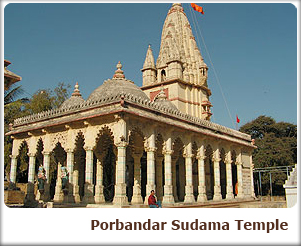
By Air
Breakfast will be at the hotel.
Enjoy shopping.
Transfer to the airport to take flight for Porbander.Reach and check into the hotel.
Porbandar is a coastal city in the Indian state of Gujarat, perhaps best known for being the birthplace of Mahatma Gandhi and Sudama (Friend of Lord Krishna). It is the administrative center of Porbandar District.
The name "Porbandar" came from the combination of two words: "Porai", the name of a local goddess, and "Bandar" means port or harbour. Thus, 'Porbandar' translates to 'Porai's harbour'. Several sources refer to the area as 'Pauravelakul', a name known to have been in use during the 10th century; this ancient name may possibly translate to 'land of Porai's clan' or to that effect. The town is mentioned in the Hindu epics as the hometown of Sudama, a beloved friend and class-fellow of lord Krishna; the town has also often been referred to as 'Sudamapuri' on that account.
Located in the extreme west of India, Porbandar is an important all-weather port on the Arabian Sea. It supports a population (c. 2001 CE) of over 150,000. Because it's the birthplace of Mahatma Gandhi, Porbandar is today something of a tourist centre and is served by an airport and train line. Its deep sea port was built during the last quarter of the 20th century.
Overnight will be at Porbandar.
Day 04
Porbander
Start sightseeing of the city after breakfast.
Darbargadh: Darbargadh, the fortified palace was built by the Rana Sartanji. This palace has a huge carved stone entrance gate flanked by high turrets and massive wooden doors. It is a typical example of such royal enclosures situated within the town of Gujarat. The nearby edifices on the left of the entrances are also good examples of large mansions with courtyards and intricately carved wooden elements.
Kirti Mandir: Kirti Mandir was the house of the Mahatma Gandhi and Kasturba, his wife. This place is situated near the place where the Mahatma Gandhi was born. This place has a Gandhian library and a prayer hall.
Sartanji Choro: Rana Sartanji built Sartanji Choro, the three storeyed summer pavilion. This palace was built in the Rajput style as a retreat in the middle of the garden. Each side of the garden represents a different reason. The pillars with images of musicians, profusely carved foliated arches and a single dome at the top gives an idea of bygone days, when Rana Sartanji used to compose poems in Braj bhasha, sitting under this pavilion.
Huzoor Palace: Huzoor Palace is located at the end of Marine Drive, in a huge campus. This sprawling palace is built in the European style with sloping roofs, several wings and big windows, overlooking the sea. The wings are interspersed with the back and front yards which bring nature and the building together by gardens and fountains. The semi-circular porticos with neo-classical pillars, decorated entrance gate and the commanding view makes this palace, a worth visiting place.
Overnight will be at Porbandar.
Day 05
Porbander – Dwarka
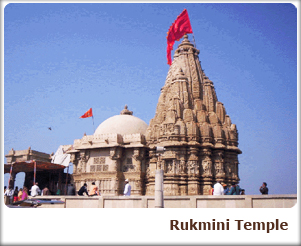
By Road 122Kms/03hrs
Breakfast will be at the hotel.
Proceed to Dwarka. Reach and check into the hotel.
Dvaraka is a city and a municipality located in the Jamnagar district of Gujarat state in India. Dwarka (Dvaraka in Sanskrit - used in this article when referring to the city in a historical context), also known as Dwarawati in Sanskrit literature is rated as one of the seven most ancient cities in the country. The legendary city of Dvaraka was the dwelling place of Lord Krisha. It is believed that due to damage and destruction by the sea, Dvaraka has submerged six times and modern day Dwarka is the 7th such city to be built in the area.
Dwarka – an important Hindu Pilgrimage site was the dwelling place of Shri Krishna. Marine excavations discovered the entire Dwarka city. There was a time when the sanctified city of Dwarka was the capital of the Empire of Shri Krishna. It is believed that Lord Krishna settled in Dwarka city after he left Mathura. This happened thousands of years back but the association of the city with Lord Krishna has given Dwarka its sacredness and thus millions of pilgrims are lured to this holy land. There are many tourist attractions in Dwarka.
Overnight will be at Dwarka.
Day 06
Dwarka
Start sightseeing of the city after breakfast.
Rukmini Hrid – This is one of the major Dwarka tourist attractions. There are 7 ponds, which are jointly called the “Rukmini Hrid”. This place is believed to destroy all the sins and bestow salvation. It is also said that by taking a dip at Rukmini Hrid, a man becomes powerful and is untied from the birth and death cycle.
Brahma Kund – Another popular tourist attraction in Dwarka is the Brahma Kund. Here the actual bathing takes place. It is believed that at the kund, nectar got mixed with the sacred Ganges water.
Somnath Temple – This temple is one of the 12 Jyotirlingas of Lord Shiva. Somnath means “The Protector of Moon God”. The temple is considered to be one of the major places to see in Dwarka.
Rukmini Devi Temple – It is a small but beautiful temple located at a distance of around 1.5 Kms north of Dwarka town. The temple is an architectural bliss that you can’t afford to miss during sightseeing in Dwarka, India.
Overnight will be at Dwarka.
Day 07
Dwarka - Rajkot
By Road 235Kms/05hrs
Breakfast will be at the hotel.
Proceed to Rajkot. Reach and check into the hotel.
RAJKOT: The history of Rajkot forms a major aspect of the basic information about the city. There are quite a few notable historical facts associated with Rajkot city. These facts are often considered to be important parts of the history of the entire state of Gujarat.
One of the most important facets of Rajkot history is that this city of Gujarat used to be the capital of Rajkot princely state. This city is currently the headquarters of the district of Rajkot. Another important fact related with the past of Rajkot is that it happened to be the capital of Saurashtra, another significant princely state of the state of Gujarat.
This city was established by Vibhoji, one of the sons of the famous personality Ajoji. A very crucial part of Rajkot history is its association with the father of the nation, Mahatma Gandhi. This very famous socio-political figure of India, who had a lot of contribution to the struggle for independence in India, spent the initial days of his life in this region of Gujarat.
Rajkot used to be a headquarters during the British rule in India. Therefore, this place houses a number of fascinating buildings and knowledge centers, which bear the testimony of the colonial rule. This city of India is well known for its Arya Samaj center.
Rajkot is closely associated with the socio-political life of India. It is one of the important centers of the country where non-violence was practiced in the pre-independence days. The Watson Museum offers a good insight into the history of the city.
Overnight will be at Rajkot.
Day 08
Rajkot
Start sightseeing of the city after breakfast.
Race Course: This is a large ground located in the heart of the city. It includes various places of interest like the Children's Traffic Park, Fun World, and Baal Bhavan etc. Besides it also has sports facilities like Olympic standard Indoor Stadium, International Quality Cricket Ground, Hockey, Football and Volley ball grounds, gymnasium, swimming pool etc. It offers an extremely large seating arrangement in that it has cement benches embedded on the outer border of the ground all along its periphery.
Rashtriya Shala: Rashtriya Shala, founded by Mahatma Gandhi, has a strong connection with India's freedom struggle. In the year 1920, Mahatma Gandhi demonstrated his method of showing dissent towards the British Rule by following the policy of Non-Cooperation with the government. He directed the people to boycott all government machinery including Judiciary and educational institutions. Meanwhile he also started national educational institutions in different parts of the country. Rashtriya Shala is one such institution. 66 thousand sq yards of land was given to Rashtriya Shala at a nominal cost by Sri Lakhajiraj the then ruler of the State of Rajkot. The main building of the institution was constructed on this land. Now it is a centre of village industry and its main aim is to impart basic-education on Gandhian ideology. It also conducts various activities which go by the names of BAL Mandir (pre-primary school), Keshav Kumar Mandir, and Sangeet Mahavidyalaya imparting classes in vocal and instrumental music and Bharatnatayam, and Mahadeo Desai Library.
Kaba Gandhi no Delo: Kaba Gandhi no Delo in Gujarati it means 'the residence of Kaba Gandhi'. This is Mahatma Gandhi's ancestral house in Rajkot where he spent his childhood. Located near Dharmendra road in old city area, it was built in 1880-81 by Mahatma Gandhi's father Karamchand Gandhi, who was the Diwan to the Nawab of Saurashtra. The house, now declared as a national monument has a museum 'Gandhi Smriti' with photographs and personal belongings of Gandhiji. It stands as a memorial to the Father of the Nation and is maintained by the state government. The house attracts thousands of tourists every year who come here to pay homage to Mahatma Gandhi.
Jubilee Garden: A big garden with walking paths lined with trees, this place is more popular for its spicy snacks 'chevoda' made out of rice flakes. It acts as a backdrop to the Memorial Institutes built in the memory of people who served for the cause of Kathiawad during their times. These buildings remain as remnants of the colonial past of Rajkot, and house the Connaught Hall, Watson Museum and Lang Library. The Connaught Hall was built to commemorate the visit of Duke of Connaught to Kathiawad in 1887 A.D. This building was later named Senate Hall and presently is known as Arvindbhai Maniar Town Hall.
Community Science Centre and Planetarium: The community Science Centre is run and maintained by an NGO. The chief objective of the centre is to arrange educational programmes, workshops, seminars related to science and maths for children. Besides they also have the task of educating people in the slum areas regarding burning issues like aids etc. The Planetarium was constructed in 1992. It imparts information regarding planets, their positions, movements and their effects on nature by means of audio and video shows.
Overnight will be at Rajkot.
Day 09
Rajkot - Bhavnagar
By Road 170Kms/04hrs
Breakfast will be at the hotel.
Proceed to Bhavnagar. Reach and check into the hotel.
Situated about 250 km away from Ahmedabad, Bhavnagar is an important trading centre for cotton goods manufactured in Gujarat. Bhavnagar lies in the southeast corner of the peninsular region of Gujarat known as Kathiawad or Saurashtra. Bhavnagar is home to several lakes and temples.
Relax and then proceed for the sightseeing.
The city of Bhavnagar displays many naturally beautiful places and old temples. These places are frequently visited by the local people apart from the tourists.
Among the many places to visit in Bhavnagar, the following are the popular ones: Takhteshwar Temple, Khodiyar Mata, Mahuva, Gangajaha, Gandhi Smriti, Barton Library, and Bhavnagar Lock Gate.
Bhavnagar houses some tourist’s sites like the Lock Gate that highlights the technological aspects of the city. Barton Library is the pride of the Bhavnagar city not only because it has praise worthy collection of books, but also because Mahatma Gandhi, the father of the nation, was an eminent reader in this library.
Gandhi Smriti is another tourist attraction in Bhavnagar that has been built in order to commemorate the great leader.
The Bhavnagar tourist spots speak volume about the tradition and the culture of the place. While some are heritage sites, the others are stunningly beautiful places that highlight the side of greener India.
Overnight will be at Bhavnagar.
Day 10
Bhavnagar – Palitana – Diu
By Road 200kms/04hrs
After breakfast proceed to Diu visiting Palitana enroute.
Amongst all the Jain temples, Palitana temples are considered to be the most sacred. Located on Shetrunjaya hills there are 863 temples, exquisitely carved in marble. No one is allowed to sleep overnight including the priest, because the temple city has been built as an abode for the Gods. The town is considered by many Jains to be more important than the temple covered hills of Bihar, Gwalior, Mt Abu and Girnar. Palitana was the capital of a princely state of the Gohil Rajput clan. It is also one of the greatest tourist attractions in Gujarat for foreign tourists.
Reach Diu and check into the hotel.
The weary weight of this unintelligible world can, for a while, be lightened and the waking soul can hear the music of the spheres. It is an island retreat gently rocked by the wind and the wave from the Arabian Sea. It offers you undisturbed peace and an unusual holiday.
Diu is a beautiful place with its splendid and to serve tourist with all of the best services. It has a very great heritage and a rich culture, formed by the mixture of local Gujarati culture and the foreign Portuguese culture. The all over 6 beaches make the trip best to offer all from water sports to bath or sunbath.
Enjoy the beaches of Diu and see the town which has one of the largest Portuguese forts in India, impressive 17th century churches and lanes lined with attractive Portuguese buildings. See the majestic fort, churches and other buildings of Diu.
Overnight will be at Diu.
Day 11
Diu – Somnath - Gir
By Road 110kms/02hrs
After breakfast proceed to Gir visiting Somnath enroute.
Drive to Somnath to see the Shiv Temple, Ahilya Temple, Triveni Tirth and museum.
Evening proceed to the Gir Interpretation Zone to see a cross-section of wildlife and habitats.
Overnight will be at Gir.
Day 12
Gir
Enjoy morning and evening safaris in search of the Asiatic lion in its remaining habitat, the deciduous forests of Gir. This sanctuary is also known for its thriving leopard, deer and antelope population.
Overnight will be at Gir.
Day 13
Gir – Gondal
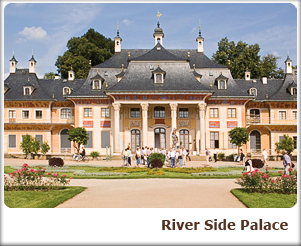
By Road 130kms/2.5hrs
After breakfast proceed to Gondal. Reach and check into the hotel.
Gondal is a city and a municipality in Rajkot district in the Indian state Gujarat. It was one of the eight first class princely states of Kathiawar Agency during Bombay Presidency.
Enjoy the sightseeing.
The Riverside Palace was built in 1875 AD by Maharajah Bhagwat Sinhji for his son Yuvraj Bhojraji, which is groomed be lawns and gardens, and has marvelously appointed sitting arrangement — the "living room" is furnished in typical colonial style with chandelier, antique wooden furniture and sofas; where as the "Indian room" decorated with beadwork, brassware and paintings, it has now become a heritage hotel.
The Naulakha Palace is the oldest extant palace in Gondal, dating back to the 17th Century. It has legendary stone carvings with exquisite "jharokhas" (balconies), a fabulous pillared courtyard, delicately carved arches, and a unique spiral staircase. The large chandelier-lit "durbar" hall (court house) witnesses stuffed panthers, gilt wooden furniture, and antique mirrors. The Private palace museum displays an impressive display of silver caskets which were in the services of carrying messages and gifts for Maharajah Bhagwat Sinhji on his silver jubilee as ruler of Gondal.
The Huzoor Palace is the current royal residence, whose one wing is opened for public. It is known as the Orchard Palace because of its huge surroundings of fruit orchards, lawns and gardens. The Room of miniatures is a splendid sitting room with a collection of miniature paintings, brass, and antique furniture.
The Royal Garages have an extensive collection of vintage and classic cars, for which it has been famous all over the world.
Overnight will be at Gondal.
Day 14
Gondal – Bhuj
By Road 275kms/05hrs
Drive to Bhuj calling in on the way at Rajkot to see the Watson Museum which has good examples of Gujarat’s craftsmanship skills, and Rashtriya Shala working to revive hand-weaving.
Reach and check into the hotel.
Bhuj is a city and a municipality in Kachchh district in the state of Gujarat, India. It was established by Rao Hamirji in 1510 and was made the state capital by Rao Khengarji I in 1549. Presently, it is the district headquarters of the Kachchh district, the second largest district in India. Bhuj is home to one of the first Swaminarayan Sampraday Temples which was built in 1822.
Bhuj, the westernmost city of India, is a treasure trove of heritage and culture. Like few other towns, which have escaped the tourist invasion in India, Bhuj offers to the traveler hospitality hitherto unseen in modern times. Bhuj is known for its small, meandering streets, palaces and temples. It also has the oldest museum in the state of Gujarat. It not only has numerous places of interest within the city, but places (especially villages) around it are very famous for their traditional handicrafts and embroidery.
Spend the evening at the bazaars of Bhuj and see the historic buildings.
Overnight will be at Bhuj.
Day 15
Bhuj
Breakfast will be at the hotel.
Enjoy the sightseeing.
There are a number of villages around Bhuj, which offer a cultural fiesta to the traveler. Special permits have to be obtained from local government offices in Bhuj to visit these villages. Some of the important villages near Bhuj are Bhujjodi, which is famous for weaving. Padhar and Dhaneti are famous for traditional Ahir embroidery. Dhamanka is known for block printing. Lilpur is known for its embroidery while the village of Anjar is famous for block printing, tie and dye items and traditional betel nut crackers. Items obtained from these villages make good souvenirs as well as items of daily use. The village of Dholavira is an ancient site associated with the Indus Valley Civilization. Anjal Wild Ass Sanctuary and the town of Gandhidham are other places worth visiting near Bhuj.
Overnight will be at Bhuj.
Day 16
Bhuj – Mandvi
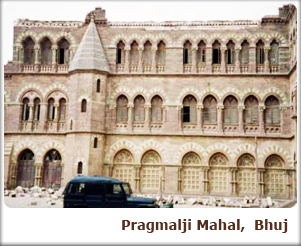
By Road 56kms/1.5hrs
Breakfast will be at the hotel.
Enjoy the sightseeing.
Bhuj is known for its palaces, built in the traditional Kutchi style. Aina Mahal or the Palace of Mirrors (Old Palace), surrounded by a small, fortified courtyard built in the 18th century, is located in the old part of the city. It is an important tourist spot and houses a museum within it. The Hall of Mirrors and the Pleasure Pool within this palace are important. Near the Aina Mahal, is the Prag Mahal (New Palace), which was built in the latter half of the 19th century. The Kuchch Museum, formerly known as the Ferguson Museum (named after its founder Sir James Ferguson, Governor of Mumbai during the rule of the British), was built in 1877 and has a good collection of artifacts, depicting the history and culture of Bhuj and its surroundings. It is also the oldest Museum in the state of Gujarat. The Sarad Bagh Palace, the Swaminarayan Temple, Bharatiya Sanskriti Darshan Kachch (folk museum) are other tourist attractions of this city. The city walls built in 1723 by the local rulers on the hills overlooking the city can be seen from different parts of the city.
After sightseeing proceed to Mandvi. Reach and check into the hotel.
Mandvi is a city and a municipality in Kachchh district in the Indian state of Gujarat. It was once a major port of the region and summer retreat for Maharao (king) of the Kachchh. The old city had a surrounding fort. Remains of the fort wall can still be seen. The city has more than four hundred years old ship building industry and still manufacturing small ships.
Overnight will be at Mandvi.
Day 17
Mandvi
Breakfast will be at the hotel.
Enjoy the sightseeing.
Mandvi has a very pleasant climate throughout the year and was a summer retreat of the Kutch maharajas (kings).
Vijay Vilas Palace: The center of attractions at Mandvi is the Vijay Vilas Palace, a Royal abode set in the middle of well-laid gardens with water channels and marble fountains. The architect and craftsmen from Jaipur designed and constructed the palace in 1920 AD. The palace has all the elements of Rajput architecture and draws largely on the plan of palaces of Orchha and Datia. The central high dome on the pillars, the Bengal domes on the sides, the windows with coloured glass, carved stone 'jalis', domed bastions at the corners, extended porch and other exquisitely stone-carved elements, make the palace worth visiting. The Vijay Vilas Palace has its own private beach which offers air-conditioned tented accommodation. Being private with conditional access it is a must visit for all beach lovers who want to enjoy their solitude and admire its eco-friendly pristine beauty. For these reasons, this palace has been used as the setting in many Hindi films and has now become a popular tourist destination.
Mandvi Beach: Mandvi has one of the most beautiful beaches in Gujarat. The beach, known as 'Kashi-Vishwanath Beach' is the most visited local attraction in Mandvi.
Wind Farms: There are a number of windmills on the Mandvi beach, engaged in the generation of power from wind energy.
Rukmavati Bridge: The bridge on the Rukmavati River was built in 1883; it is the longest existing structure of its kind in India today.
Topansar Lake: Sitting in the heart of the city, this lake forms and important landmark as well as a source of water to the city.
Bandhni Bazaar: Mandvi is known for the production of its famous Bandhani (tie-dye) and other country crafts.
Traditional ship building: Mandvi is also a 400 year old ship building centre. The ships built here used to sail up to England and return back. Even today, master carpenters build fishing boats by traditional techniques.
Shyamji Krishna Verma Smarak: The smarak (monument) is located near Lohana Mahajan Wadi. Shyamji Krishna Verma was a scholar and freedom fighter. He established India House in Britain to support Indian student going UK for studying, eventually India house become a foreign hub of nationalist activity for freedom of India. Shyamji Krishna Verma was born in Mandvi.
Kasi Vishvanath Beach, Salaya: This is another beach near Mandvi. It derives its name from a Shiv temple nearby.
Public Bath System “KUYDI”, Talav Gate
Overnight will be at Mandvi.
Day 18
Mandvi – Dasada
By Road 320kms/06hrs
Breakfast will be at the hotel. Drive from Mandvi to Dasada passing picturesque old towns and villages. At Dasada, watch Rabari women at work on their distinct embroideries.
Reach and check into the hotel.
Overnight will be at Dasada.
Day 19
Dasada – Modhera – Patan – Ahmedabad
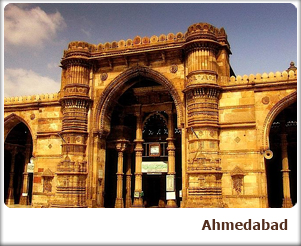
By Road 200kms/05hrs
Breakfast will be at the hotel.
Enjoy Safari. The Little Rann of Kutch Wildlife sanctuary can be from Dasada, 93 Kms from Ahmedabad and on an important route. This is one of the largest wildlife sanctuaries in India, spanning some 4950 sq ft in area, and comprising range habitats from saline desert plains, arid grasslands, rocky and thorn scrub to lakes and marshes.
Proceed to Ahmedabad visiting Modhera & Patan enroute.
MODHERA - 99 Kms from Ahmedabad, the 11th century Sun temple of Modhera is easily one of the finest examples of devotional in western India. Built by the Solanki Rajput kings, the aid of donations from the people, the temple features carved torana arches mounted on kirti stambhas (pillars of victory) as the entrances, a large rectangular stepped with 108 smaller shrines, an exquisite 52 pillared portico, beautiful domed central portion and a sanctum sanctoruim designed so that the sun light fell on the bejeweled statue of the God, specially at sunrise during the equinox. The exterior of temple is carved with traditional erotic scenes, rivalling at Konark and Khajuraho, and depictions of various Gods and, while inside are friezes of the Mahabharata and portrayed on the pillars. The temple is framed by a well garden, and sits on the banks of river Pushpawati. The Sun Temple, Modhera (Gujarat) was built in 1026 AD by King Bhimdev of the Solanki dynasty and is dedicated to Lord Surya, the Sun God of Hinduism. It is akin to the Konark Sun Temple of Orissa. One more sun temple is at Martand in Jammu and Kashmir.
PATAN - Patan City was capital of Gujarat in Medieval Times. It is the administrative seat of Patan District in the Indian state of Gujarat and administered by municipality. The City contains many Hindu and Jain temples as well as few mosques, dargahs and Rojas. The city has many historical places also.
There are many Tourist Attractions including Forts, Vavs (Step Wells), Talavs (Lakes) and places of worships.
The Only Remain of Old City of Patan in the form of a very small portion of Old Fort near Kalka on the outskirts of the New City is of historical and archeological importance. So is the case with the remains of the walls of new fort and the Darwajas (Gates) of the new fort which are fast disappearing. Unfortunately Administration as well as a Majority of local People shows little interest in preserving these heritage places which are shrinking at a rapid pace. Fortunately the inner fort of Bhadra with its Darwajas (Gates) is preserved well. However, with the transfer of all Government and Administrative machinery from Bhadra how long it will be preserved is unclear.
Step wells include Rani-ki-Vav and Trikam Barot ni Vav. Lakes include historically and archeologically important Sahstraling Sarovar, Anand Sarovar (Khan Sarovar) and now revamped Gungadi Sarovar. There are many a Religious places of significance on religious, historical or architectural grounds. These include Old Kalka Mandir, Panchmukhi Hanuman, Jasma Odan Ni Deri, Old Mahalaxmi Mandir, Hingaraj Mandir, Panchasar Derasar and Sheikh Farid no Rojo.
Salvivad, a Place where Patolas are woven along with places where traditional Clay Toys are made are also worth visiting. Many annual religious fairs also act as tourist destination.
Reach Ahmedabad and check into the hotel.
Ahmedabad or Ahmedabad is the largest city in Gujarat and the sixth largest city in India with a population of almost 5 million. The city is also sometimes called Karnavati, an older name and as Amdavad in colloquial Gujarati. Ahmedabad is the administrative center of Ahmedabad District, and was the former capital of Gujarat State from 1960 to 1970, when Gandhinagar replaced it.
King Karandev 1, the Solanki Ruler, had waged a war against the Bhil king of Ashapall or Ashaval. After his victory Karandev established the city called "Karnavati". This Hindu kingdom of Karnavati retained its importance till early 15th century when Gujarat fell to the Muslim Sultanate.
In 1411 Sultan Ahmed Shah conquered Karnavati, and after his name Karnavati was renamed to Ahmedabad.
The city was built in open and spacious plane to the East of Sabarmati. It compromised of smaller known Fort as Bhadra Fort. The city fort wall was enclosed containing 12 Gates. The city of Ahmedabad went on expanding in every direction by the addition of new areas on both the sides of the river and with the well laid out beautiful buildings, lakes and mosques.
In 1753 combined armies of Raghunath Rao and Damaji Gaekwad took the fort, which resulted into end of Mughal Rule in Ahmedabad. In 64 years during the rule of Gaekwad and Peshwa, city became worse. In 1818 British took over the administration of Ahmedabad. During this period Ahmedabad developed, Municipality Committee was founded, Railway link was established.
In 1915 Mahatma Gandhi came from South Africa and established Ashram on the banks of Sabarmati.
The historic center of Ahmedabad is presently a thriving business district. Ahmedabad is mainly divided in two parts, the old city, and new city. The old city has developed rather haphazardly, and most of the roads are narrow and crowded during business hours. The new city has well-structured, wide roads. A wide variety of shops and businesses exist in the city. In addition to its role as a commercial center, Ahmedabad is also an important industrial center, with chemical and textile industries. Ahmedabad is often described as the Manchester of the East, because of its once-booming textile industry.
Overnight will be at Ahmedabad.
Day 20
Ahmedabad
Start sightseeing of the city after breakfast.
History is immortalized by the magnificent architecture of Ahmedabad monuments ranging from the grand Havelis to the majestic mosques. The HAVELIS (wooden Mansions) of Ahmedabad are a window to the lofty life styles of the rich of early 19th century Ahmedabad. But no sooner do one cross the columned verandahs the Havelis open into the courtyards, the divankhanu (formal drawing room), the service areas and other rooms. In the mosques and mausolea of Ahmedabad you will discover the contribution Gujarat made to Islamic architecture in India. They embody a fusion of the austere Islamic principles of design with the traditional Hindu art of sculpted ornamentation. See fusion architecture at its best in the stone tracery on the windows of SIDDI SAYED MOSQUE (1571) and the elegant JUMMA MASJID (1424). The delicate tracery, the ornamented minarets and rich detail of SARKHEJ ROJA (1445-51), is yet another example of this splendid style. So are the RANI ROOPMATI MOSQUE (1430-40) and RANI SIPRI MOSQUE (1514). SHAH ALAM ROZA built by Empress Noorjehan’s brother also reflects the same elegance in its carved marble architecture.
The SHAKING MINARETS of Sidi Bashir’s Mosque remain a mystery till today. Shake one minaret and the other resonates in harmony while the interconnecting terrace stands still. The Jain temples of Ahmedabad present yet another distinctly different style of architecture of which the HATHEESING JAIN TEMPLE is most representative. A grandiose structure built in marble that cost a whopping Rs. 1 million back in 1848. Next is the 300 year old DUTCH CEMETERY near Kankaria Lake. These tombs dating back to the 17th and 18th centuries were in memory of the Dutch and English pioneers who established their factories in Surat and Ahmedabad. Visit the famous CALICO TEXTILE MUSEUM which is one of the finest textile museums in the world displaying an impressive collection of rare textiles and costumes that date back to the early 17th century. At the UTENSILS MUSEUM more than 2000 varieties of traditional Indian utensils in curious shapes and sizes are on display. And finally the crown jewel, SABARMATI ASHRAM. Mahatma Gandhi’s home from 1918-1930, the Ashram is tucked away in a quiet corner by the river Sabarmati. It served as Mahatma Gandhi’s base for his Dandi Satyagraha that triggered the nonviolent agitation against the British.
Step Wells – In era of the Sultanate, the authorities use to develop wells for travelers as a place to rest or to drink water. The finest examples are Dada Hari ni Vav and the Adalaj ni Vav. The interiors of these caves are paved with beautiful carvings in stone.
The Palace of Shahibaugh – Shahibaug Palace was built in 1622 A.D. by Shahjahan as a royal residence. Currently same has been converted into Sardar Patel Memorial. It is also associated with Shri Rabindranath Tagore.
Sabarmati Gandhi Ashram – After the return of Gandhiji from Africa, after some time Gandhiji started living in Ahmedabad. He built on the banks of the river Sabarmati, the famous Gandhi Ashram. In today's modern Ahmedabad this particular place stands high on tourist map. Still various things of Gandhiji can be seen and there are few Khadi shops around, which Gandhiji promoted.
Jain Temples (Derasars) – Ahmedabad has been famous for its Derasars or Jain Temples like Chintamani Temple, Huthee singh Temple and various other are situated in the old city. There are approximately hundred plus Derasars in the old city. Many of them were built in Moghul times, many are situated in the houses of people and many are underground.
Darwazas (Gates) of Ahmedabad: During Ahmedabad construction, various monuments were built around the fort of Bhadra. These monuments were the gates for the entrance in the city. These gates, also called Darwaza are situated all around the old city. Few of them still are visible in proper condition.
Teen Darwazas
Lal Darwazas
Delhi Darwazas
Sidi Syed Mosque: The mosque is situated near Lal Darwajaa and it has magnificently carved stone work. The mosque is famous worldwide for the same.
Jumma Masjid: A fine example of Islamic Architecture is developed in the Sultanat period and was built by Sultan Ahmed Shah in 1423 A.D. It stands on 260 pillars with support of 15 Domes; the mosque is also regarded one of the beautiful monuments in Western India. One could witness outstanding workmanship and design.
Bhadra Kali Mandir (Temple) & Fort: The Temple was built in the fort of Bhadra during Aazam Khan's time. It was built in one of the ground floor rooms and it draws thousands of visitors every day.
Calico Museum of Textile: CMT has one of the finest collections of textile work from all over the India; it all also has collection from varied ages. The collection has Shamianas, Wall Hangings, Saris and various rich works of embroideries. The Museum is situated near Shahibaugh Palace.
Vishalla Utensils Museum: Utensil Museum takes in account more than 2000 traditional Utensils of all sizes & shapes. They are designed in silver, brass, and bronze. And various utensils have work on them done in wooden & ivory. This beautiful museum is located at vasna.
Tribal Museum: The Museum is located at Gujarat Vidyapeeth. The museum takes credit in properly documenting life of Tribal. The museum boast a collection of complete tribal life right from their home, artifacts and various objects which are used in day to day life.
Sanskar Kendra – Kite Museum is situated at Paldi, the museum boasts the collection of various kites, which is one of its kinds in India. It has collection of kites from all over the world, various photographs as well. The adjacent part to the museum has theatre, which on various occasions is hub of various cultural activities.
Kankaria Lake, Aquarium & Zoo: The life bubbles here every weekend, constructed by Sultan Qutub-ub-Din. Originally known as Hauj-e-Qutub (The Kings Bath), in olden times the sultan used it has recreational for himself and his queen. The Lake is a polygon with thirty four sides and three balconies on to the water from the edge of the lake. The sultan enjoyed illumination and fireworks here. In the middle of the lake is situated the Nagina Wadi and is connected by way from the lake. The on sides is situated the Kankaria Zoo & Balvatika. Zoo has various animals and attracts various visitors. The Balvatika has collection mirrors which make you laugh.
Overnight will be at Ahmedabad.
Day 21
Ahmedabad - Departure
Breakfast will be at the hotel.
As per the flight timings you will be transferred to the airport to take flight back home with sweet memories of the GUJRAT TOUR.
...........................................................................TOUR ENDS...........................................................................
INCLUSIONS:
- ACCOMODATION AT SUGGESTED HOTELS,
- DAILY BUFFET BREAKFASTS,
- AC VEHICLE WITH THE DRIVER FOR ALL TRANSFERS & SIGHTSEEING AS PER THE ITINERARY,
- MEET AND ASSIST AT THE AIRPORT ON ARRIVAL/DEPARTURE,
- ENGLISH SPEAKING LOCAL GUIDES AT PPLICABLE PLACES,
- 02 SAFARIS IN GIR,
- 01 SAFARI IN RANN OF KUTCH,
- VILLAGE VISITS,
- ALL MEALS IN GIR, MANDVI & DASADA,
- AIRFARE IN ECONOMY CLASS FROM MUMBAI – PORBANDER,
- ALL PARKING WITH ROAD TAXES AND DRIVER ALLOWANCES AND
- ALL APPLICABLE TAXES AND SERVICE CHARGES.
- LUNCHES & DINNERS,
- MONUMENT ENTRANCES,
- CAMERA CHARGES AT THE MONUMENTS,
- PORTER CHARGES,
- TIPS &
- PERSONAL EXPENSES.
Copyright © Mesmerizing india. All rights reserved.

